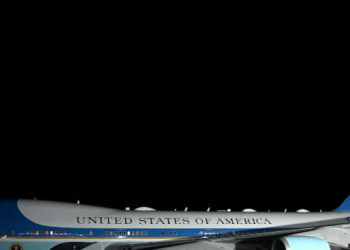The travel and tourism industry, which accounts for about 3% of the U.S. GDP, has long been one of the economy’s most robust sectors, particularly when it comes to trade: The U.S. had posted a trade surplus in travel every year this century.
Until this year.
A drop in foreign visitors to the U.S. caused the real value of exports of travel services to fall at a 7.8% annual rate in the first quarter, according to the GDP report released Wednesday. The U.S. Travel Association says the United States is now running an annual travel trade deficit of $50 billion, compared with a $3.5 billion surplus in 2022.
“This presumably reflects increased hostility by many foreigners to the U.S., as well as fear of harassment by ICE officers,” Dean Baker, senior economist for the Center for Economic and Policy Research, wrote in his note reviewing the first quarter GDP numbers. “We will likely see further declines in future quarters, especially among students coming to study in the United States.”
There has already been an 11% year-over-year decline in enrollment of foreign students between this March and last, according to the Institute of Educational Enrollment. The organization expects the drop to result in a loss of up to $4 billion in spending.
Other data bears out the dour outlook for travel. The International Trade Association reported earlier this month that arrivals of non-citizens to the United States by plane declined by more than 11% since March 2024. Tourism Economics, a firm that tracks the hospitality industry, recently changed its forecast for foreign visitors to the U.S. to a 9.4% decline for the year, after projecting a 9% increase back in December. The firm estimates that international visitor spending in the United States will slide 5% as a result, a loss of $9 billion this year.
“Trump’s policies and pronouncements have produced a negative sentiment shift toward the U.S. among international travelers,” the firm said.
U.S. airlines are feeling the pain. Several recently changed their projections for the full year as tariffs, inflation, and shaky consumer demand forced a re-evaluation of 2025 expectations. The Dow Jones Airlines Index is off 30.17% year to date and the DJ Hotels Index has declined 14.12%, with both hitting 52-week lows on April 8.
Not all the travel news is bad. Year-on-year comparisons of airline travel likely suffered this year because Easter fell in April, versus March in 2024, shifting holiday travel. An analysis by the New York Times (NYT) found that international arrivals at U.S. airports are down only 1.5% so far this year, and airlines say bookings to Europe from the U.S. are up.
Booking Holdings (BKNG), the parent company of Booking.com and Priceline, reported robust first quarter earnings on Tuesday, with bookings up 7% and revenue rising 8%. Still, CEO Glenn Fogel acknowledged in the firm’s earnings statement that “there is uncertainty in the market around the near-term geopolitical and macroeconomic environment.”
The outlook for international travel does not look poised to improve, given that the first quarter GDP numbers did not take into effect President Donald Trump’s April 2 announcement of steep tariffs on virtually every country. Tourism International, which attributed much of its lowered forecast for foreign travel to the U.S. to global fallout from Trump’s “America First” rhetoric, noted that “the March data reflect foreign visitor patterns before the April 2 ‘Liberation Day’ tariff announcement, which may draw further backlash.”
It has clearly drawn backlash from Canada, where citizens have recoiled from Trump’s talk of making it the 51st state. In March, the number of Canadians taking road trips across the U.S. border were 32% lower than March 2024, and there was a 13.5% decline in air travelers from Canada, according to Statistics Canada. Advance bookings for flights from the U.S. to Canada for the April to September period were off more than 70% from the prior year.
The post America’s travel industry is in sharp decline appeared first on Quartz.




